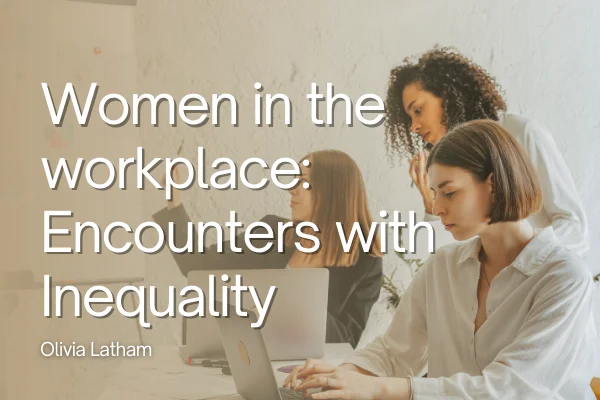Women in the Workplace: Encounters With Inequality

Today, let’s talk about the inequality women encounter in the workplace.
Did you know that studies show that in 2022, women in the UK will be paid just 90p for every £1 earned by men?
The results of the government’s latest gender pay gap report are unfortunately unsurprising to me. Among the cost of living crises, it paints a dismal picture of the realities of being a woman in 2022.
Even though companies that are gender and ethnically-diverse outperform their peers, inequality is still present. What’s more, companies with low rates of both gender and racial diversity are 29% more likely to make less money. In other words, it is damaging to a company’s performance if its leadership teams do not have diversity.
Research shows that inclusive teams make better business decisions up to 87% of the time. As you can imagine, teams with less diversity are more likely to make poor choices for the company. Diversity is needed not only for equality and basic human rights but also to succeed! Difference is a blessing, not a curse, and it enables creativity. Every human sees the world uniquely and has different knowledge, perspectives, and points of view.
Being a female entrepreneur is no walk in the park either! Studies show that only 29% of small businesses in the UK are run by women. However the inequality does not stop there; 1 in 3 female entrepreneurs have experienced sexism running their own business, and 91% of female entrepreneurs say gender bias and inequality are common in business. I find this appalling; even setting up a business is not enough to earn equal rights in some people’s eyes. Not that equal rights should have to be earned anyway.
While the Sex Discrimination Act and the Equal Pay Act were established back in 1970, extensive progress towards financial equality has been limited.
Last year, the Institute for Fiscal Studies argued that the gender pay gap has seen “barely any change” over the past 25 years once increases in women’s education are accounted for.
Despite this, I am forever hopeful that one day we will finally achieve wholesome equality. Sheryl Sandberg once said, “In the future, there will be no female leaders. There will just be leaders.” This will be the day when there is no shock factor when a woman is in a position of power. This will be proven on the day that all the above stats sit at 50%.
After reading this, I would like you to think about three things today:
- Have you experienced inequality in your workplace?
- Why are we still experiencing inequality in the workplace?
- How can we change the inequality that is being presented?
Resources:
- https://get.simplybusiness.co.uk/empowering-women-in-business/
- https://www.forbes.com/sites/forbesnonprofitcouncil/2020/03/27/why-gender-equality-matters-in-business-success/?sh=57946f82669c
- https://www.stylist.co.uk/news/gender-pay-gap-2022-report/644838
- https://www.icena.net/gender-inequality-workplace-statistics/#:~:text=Sheryl%20Sandberg%20once%20said%3A%20%E2%80%9CIn,in%20a%20position%20of%20power
